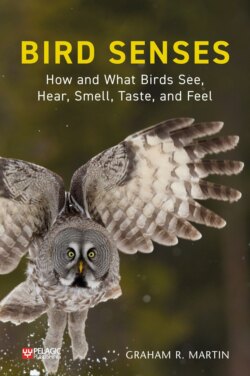Читать книгу Bird Senses - Graham R. Martin - Страница 41
На сайте Литреса книга снята с продажи.
Sources of variation in vision
ОглавлениеWe are familiar with the idea that there are many different designs of bird wings and bills. Ornithology textbooks show arrays of different wing and bill types along with discussion of their different attributes and functions. Such discussions make it clear that there is not a single optimal wing or bill type. A single wing type cannot fly at all velocities, or support birds of different weights, or carry out all kinds of manoeuvres. A single bill cannot be an all-purpose tool for extracting and handling many types of food. What is optimal depends upon the task. This also applies to the senses of birds, especially vision.
It is relatively easy to understand the structural bases for the different types of performance of birds’ wings or bills. For example, there may be obvious differences in the relative lengths and flexibility of bones, or in the number, hardness, and relative lengths of feathers. Bills also differ in their length, shape, and flexibility. It is not so immediately obvious when looking at an eye how variations in vision can arise. How is it possible for one bird to have quite different visual capacities from another?
